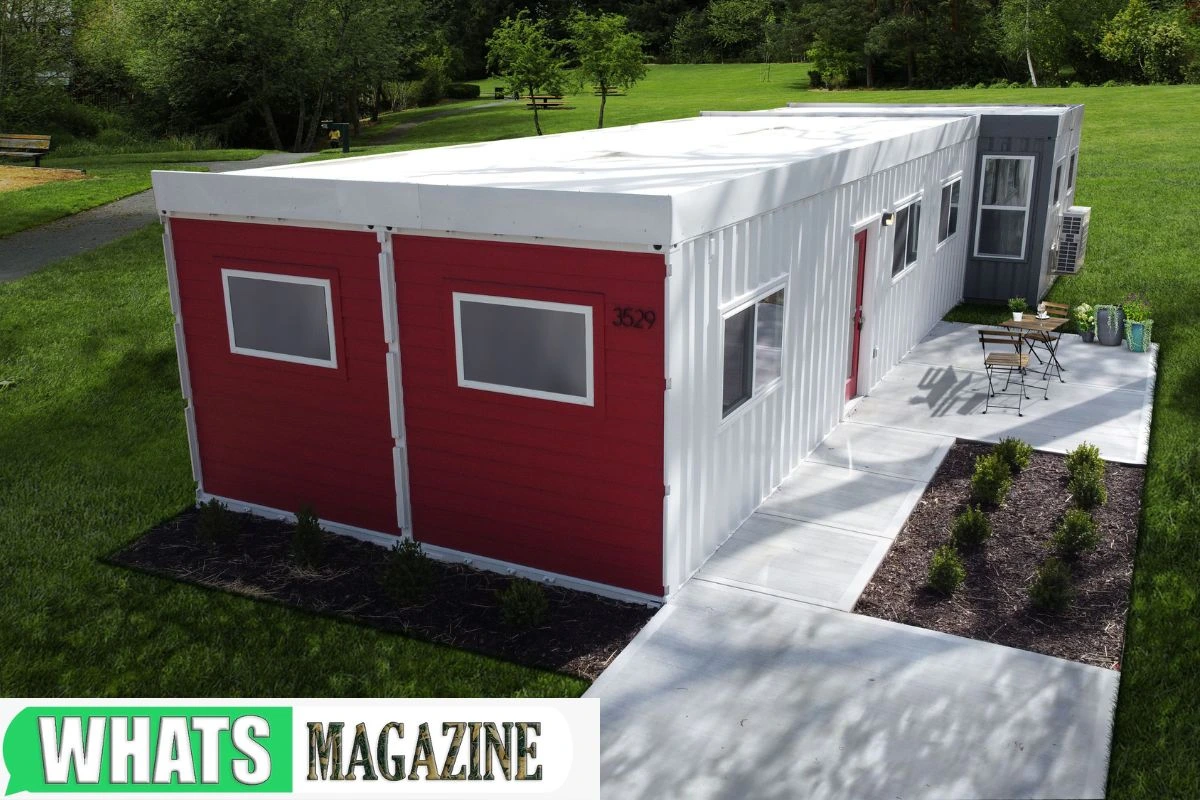Are you ready to make your dream of owning a unique, eco-friendly home a reality? Converting a shipping container into a livable space might be just the project for you. These steel giants, originally designed for transporting goods globally, have found a new purpose as the building blocks of innovative and cost-effective homes.
This article will guide you through converting a shipping container into your dream home.
In this article
Planning Your Container Home
Building your container home requires meticulous planning. And so, you should consider the following factors:
Regulations and Permits
First, check with your local authorities to understand zoning regulations and obtain the permits for your project. Regulations vary by location, so compliance with local laws is essential.
Budget
Determine your budget early in the planning process. Container homes can be cost-effective, but expenses can quickly add up with customizations and site preparation.
Design
Think about your dream home’s layout and design. Shipping containers come in various sizes, but the most common options are 20 or 40 feet long. You can stack or arrange them in different configurations to create your ideal living space.
Site Selection
Choose a suitable location for your container home. Factors to consider include accessibility, utilities, and the orientation of the containers for optimal natural light and energy efficiency.
Sourcing Your Shipping Containers
Once you have a solid plan, it’s time to acquire your shipping containers. You can check SCF shipping containers for various options of quality containers you can use to transform as a home. To better help you out in choosing, keep these tips in mind:
Condition
Inspect the containers carefully for any signs of damage or rust. These concerns often happen with used containers and require more maintenance and repairs.
Certification
Ensure your containers meet industry standards and have the necessary safety and structural integrity certification.
Transportation
Consider the logistics of transporting the containers to your building site. You may need a crane or a specialized truck for delivery.
Foundation and Site Preparation
Proper site preparation is essential for the stability and longevity of your container home. To ensure that your container will stand the test of time, you should follow these steps:
Foundation
Depending on your local regulations and soil conditions, you can choose between various foundation options, including concrete piers, slabs, or a full basement. A solid foundation ensures stability and prevents moisture issues.
Utilities
Plan for utilities like water, electricity, and sewage. Consult with professionals to connect your container home to the grid safely.
Insulation
Shipping containers are made of metal, which conducts heat and cold. To create a comfortable living environment, insulate the walls, ceiling, and floor. Common insulation materials include spray foam, fiberglass, and rigid foam boards.
Cutting and Framing
To create openings for doors and windows, you’ll need to cut through the steel walls of your containers. This step requires precision and the right tools. Here’s how to do it:
Marking
Carefully mark the desired locations for openings. Double-check your measurements to avoid mistakes.
Cutting
Use a plasma cutter or a reciprocating saw with a metal-cutting blade to make precise cuts. Safety gear, including gloves and goggles, is a must.
Framing
After cutting, reinforce the edges of the openings with steel framing to maintain the container’s structural integrity. This framing also provides support for doors and windows.
Structural Modifications
To create a spacious and functional living space, you may want to combine multiple containers or add extra features. Common modifications include:
- Joining Containers: Weld containers to create larger living areas or unique designs.
- Roofing: Consider adding a roof or containers for a two-story design, rooftop garden, or deck.
- Exterior Finishes: Customize the exterior with siding, stucco, or other materials to enhance insulation and aesthetics.
Plumbing and Electrical Work
Your container home needs a reliable plumbing and electrical system for daily living. Here’s how to set it up:
Plumbing
Install water supply lines, drainage, and sewage systems. Ensure the plumbing meets local building codes and is insulated to prevent freezing in cold climates.
Electrical
Hire a licensed electrician to wire your container home safely. Plan the layout for outlets, switches, and lighting fixtures according to your design.
Interior Finishes
Now, it’s time to bring your vision to life by transforming the interior of your container home. Focus on these key aspects:
Flooring
Choose durable and attractive flooring materials that suit your style. Choices incorporate hardwood, cover, vinyl, and tile.
Walls
Finish the interior walls with drywall, plywood, or other materials. Painting or using wallpaper can add a personal touch.
Kitchen and Bathroom
Design functional and compact spaces for your kitchen and bathroom. Consider space-saving appliances and fixtures to maximize the available square footage.
Heating and Cooling
Depending on your climate, install an efficient heating and cooling system to maintain a comfortable temperature year-round.
Sustainability and Energy Efficiency
Container homes can be environmentally friendly and energy-efficient. To achieve this, consider these sustainable practices:
- Insulation: Use eco-friendly insulation materials to reduce energy consumption.
- Solar Panels: Install solar panels to harness renewable energy and reduce your reliance on the grid.
- Rainwater Harvesting: Collect rainwater for non-potable uses like irrigation or flushing toilets.
- Energy-Efficient Appliances: Choose energy-efficient appliances and lighting fixtures to reduce electricity consumption.
Final Touches
As you near the completion of your container home, add the finishing touches to make it your own.
Furnishings
Select furniture and decor that complement your style and maximize the available space.
Landscaping
Create an outdoor living area or garden around your container home to enhance curb appeal.
Personalization
Add personal touches like artwork, plants, and accessories to make your container home feel like a welcoming sanctuary.
Maintenance and Safety
Regular maintenance is key to ensuring the longevity of your container home. Inspect for rust, leaks, and structural issues and address them promptly. Additionally, have a fire safety plan and equip your home with smoke detectors and fire extinguishers.
Build Your Dream Container Home
Converting a shipping container into your dream home is an exciting and rewarding project. But this dream requires great responsibility. Be prepared for some challenges, but remember that the journey is part of the adventure. Your container home will provide shelter, a sense of accomplishment, and pride in building something special.











